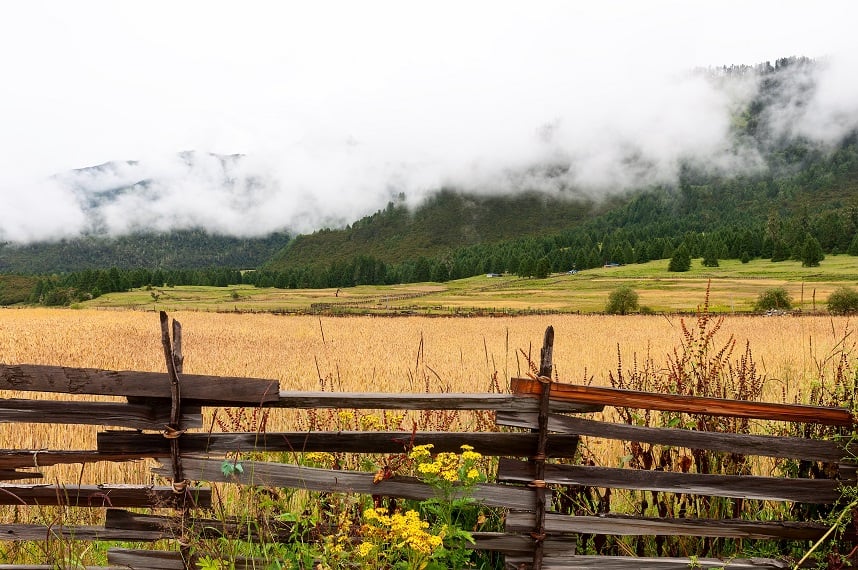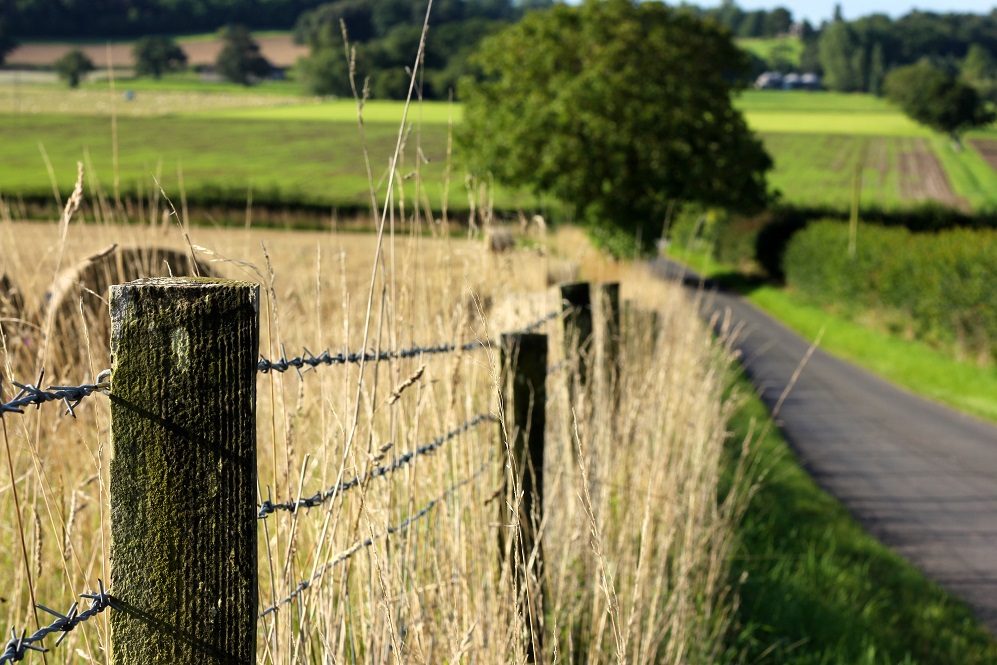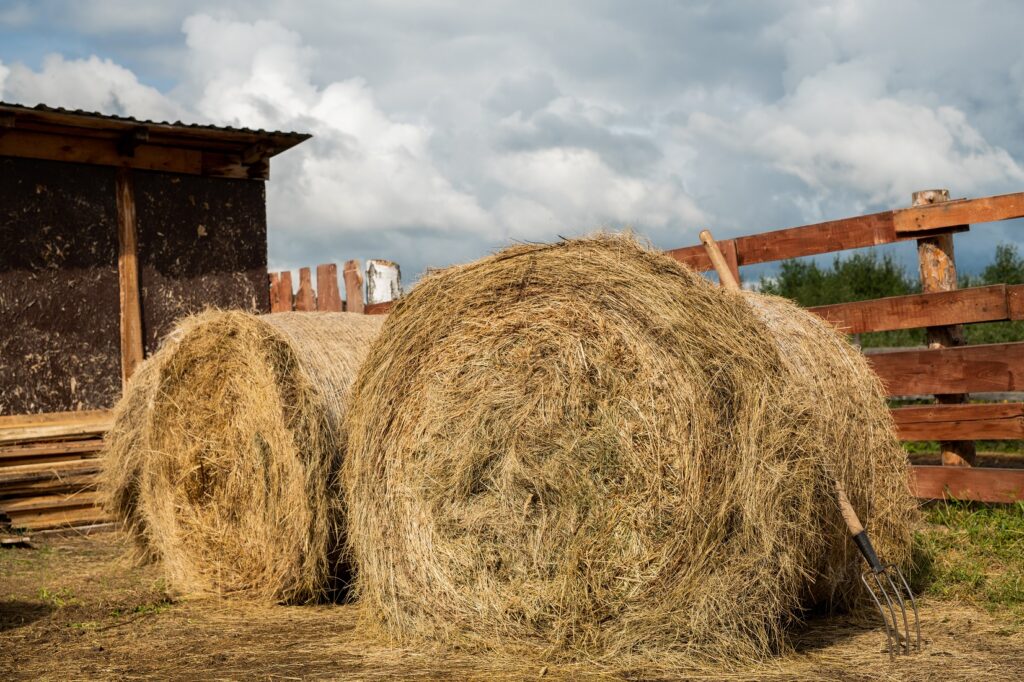Blog

Crop Fencing 101 – Stop Pests, Save Time & Grow Better Crops!
Confused about which crop fence would be the most appropriate for your farm? Here’s what you need to know before you make a choice!
Fences play a very critical role in a farm. They not only contain the animals in their shed but also provided security to the crops from roaming animals and unwanted weeds.
If you are planning to renovate your farm and add new fences around the land, you have to make note of certain things.
Here, we have discussed the purpose of a fence, the types of fences, and some pro tips on proper installation and maintenance of the fence.
What Is Crop Fencing?
A fence is generally used to keep animals out of the agricultural land so they don’t eat away or ruin the produce. While those in Tiny homes usually don’t have the land an infrastructure to have crops, they may resort to tower gardens instead, inside or outside of their home.
It is a common practice across the globe and farmers use different kinds of materials to make the fence.
The type and material of the fence generally depend on the area’s terrain, the climatic conditions, and the animals you want to contain.
Fences are occasionally used to safeguard newly planted trees or to confine areas that need to regrow.
They also manage access for humans, wildlife, and grazing cattle and are frequently created in combination with pathways or other types of access work.
Different kinds of fences have been developed to fit certain environments and needs.
How To Plan The Fence For Your Farm?
Fencing your farm is a long-term investment and could be a bit hefty on your pockets.
However, keep in mind that it is very important to invest in a good fence especially if you have livestock on your farm.
As much as the material of the fence is important, it is equally important to plan how to choose the location of fences and properly install the fences.
If you are planning on building fences, here’s what to keep in mind:
1. Make A Map Of Your Fencing Plan
- The best way to start the fencing procedure is to make a plan and draw a rough sketch for the farm.
- Remember, you need to take into account the topographical features of the area as well.
- A thoroughly thought plan will ensure that you choose the right fence and install them accurately at the right places.
- Once you have drawn a rough plan of the area, you can divide the land into smaller units for specific purposes like area for cropping, area for permanent pastures, etc.
2. Find The Location For Lanes And Gates
- A lane is essentially used to connect different facilities and buildings of the farmland with each other as well as with fields that could be pastured in the future.
- One Pro-tip is to plan the lanes in the driest areas so that with extensive use and waterlogging, they don’t turn into gullies.
- You can either plan a permanent lane or even opt for a temporary or movable lane if you don’t have a well-drained area.
- If you use lanes very frequently and are worried about them getting spoiled, then you could grade the area and add some graveling.
- You can place the gates for the movement of the livestock and other equipment in the corner of the field so that they are close to the farm buildings.
3. Permanent Fencing
- If you are considering constructing a permanent fence for crop protection, keep in mind to use only the best and high-quality material that will last a very long time and would require very minimal maintenance.
- Permanent fencing is basically done around the whole perimeter of the land, thus drawing a designated line of the length and breadth of the farm.
- It also keeps the livestock inside and prevents them from running away and escaping the property.
- If installing a permanent field fence across the area is not feasible and you are looking for a more affordable option, then you can always fence the area that contains the livestock and leave the rest open.
- Since permanent fencing is a long-term investment, it is necessary to put some effort and build a sturdy and well-constructed fence.
4. Temporary Fencing
- If you want for a short period of time because the last one got waterlogged or maybe ruined because of heavy use.
- In any case, if you are in need of one, you can get yourself a temporary or movable fence that will do the job.
- Movable fences or temporary fences are made for the purpose to be relocated to a new location once their work is done.
- They are comparatively a lot easier to construct. You can even DIY a temporary fence, considering you have the tools and experience in the area.
- They are a lot cheaper and won’t cost you a lot, however, they do not have a very long life and will get ruined after a certain period of time.
- These fences are ideal for planned and rotational grazing scenarios, as well as separating pastures to accommodate the needs of livestock.
- They are best if you haven’t decided on the appropriate field layout and fence design, they could be used for the time being.
How To Choose The Right Crop Fence?
Before you decide on what kind of fence will be the best, make a note of the purpose of the fence. What will be the fence used for? Even though, fences are most commonly used to contain livestock and keep them away from crops.
However, different kinds of fences are required to contain different animals.
Here are some of the options you can consider:
- Cattles: If you wish to contain cows and buffaloes, you should consider woven wire or a barbed wire fence. It is the best livestock fencing option.
- Sheep: When it comes to sheep, the most important factor is to keep the predators away. Therefore, an electric wire is the best option.
- Horses and Donkeys: Thes animals prefer a lot of visibility as well as flexibility and space, or otherwise they might get cranky and hurt someone. A woven wire fencing will work best for horses’ paddocks.
- Pigs: If you know pigs, they are a bit mischievous and have a reputation for escaping from under the fence. To avoid that, use a barbed wire that is attached very close to the ground and is sturdy enough to contain the animals as well.
Types Of Fences In The Market
Now that you know the purpose of a fence and how to pick the right, here are the different types of fences that you can consider.
1. Wooden Rail Fences
- Wooden posts and rail fencing is the most common types of fencing.
- You will find wood posts around the crop fields as a border fence. It is often installed on horse farms.
2. Barbed Wire Fences
- Barbed steel wire fences are commonly used to contain cattle and pigs.
- Wires need to be fastened to any intermediate posts in a manner that they can move laterally and be re-tensioned.
- A barbed wire is basically two to three strands of barbed wire strongly twisted with each other with a couple of barbs spaced every three to five inches.
3. Woven Wire Fences
- A woven wire can be used to contain a variety of animals. Here, a web of verticle and horizontal wires intertwined like a wire gauge to keep the animals from jumping out.
- They can be adjusted at different lengths according to the jumping ability of the animals. For instance, a deer fence would be higher than one for pigs.
4. Cable Wire Fences
- Cable fences are typically used to confine animals in locations such as holding facilities, feeding heaps, and corrals.
- Cable fences are made up of 3/8-inch smooth wire cables that are strung from one anchor post to the following.
5. Mesh Wire Fences
- Mesh wire fences are durable and safe for cattle. In many regions, they are replacing the woven fence, but they are more costly than woven wire.
- Due to their high cost, they are generally utilized for confinement fences around corrals, feeding facilities, and smaller agricultural land areas. They are also effective for horses and other animals.
6. High-Tensile Wire Fences
- High-tensile fences are made of higher carbon steel wire and are regarded as one of the strongest fence alternatives on the market.
- They are one of the most expensive solutions since they need specific equipment and abilities that the majority of traditional fencers lack.
7. Electric Fences
- When correctly placed, electric fences are a reasonably affordable choice that requires low maintenance.
- When something comes into touch with this fence, it emits a small pulse of electricity, allowing your cattle to understand its boundaries. field
- You may choose between a permanent and a temporary electric fence based entirely on your demands.
What Are The Different Types Of Fencing Materials?

There are various alternatives to consider when selecting a fence for your property, each with pros and downsides.
Let’s look at the many types of fences so you have the knowledge you need to make the best option for your property.
Wood
- Wood is a beautiful, timeless material that complements any yard layout.
- It is also less expensive than alternatives such as vinyl privacy fences or brick fencing materials.
- Because of their durability and longevity, cedar, and redwood are popular fence materials.
Metal
- Metal fences are available in a variety of materials, including aluminum, wrought iron, and chain link fence.
- Metal, on the other hand, has a very definite design style that might or might not work in your home.
Composite
- These are comprised of wood fibers and plastic. They have the beauty of wood but the durability of plastic.
- They do not warp or decay as easily as wood and are more resistant to insects.
- The quality and pricing of different composites vary greatly, so do your homework and speak with a reliable vendor.
PVC
- PVC is an excellent choice for low-cost fence materials such as stakes, post sleeves, and pickets.
- It’s a technique to cut expenses while increasing durability because little to no wood is utilized in the construction.
Vinyl
- Vinyl fencing is the fencing industry’s biggest star. This style of fence is highly expensive, but if you can finance it, you should consider it.
- It is more flexible and stronger than wood. It’s also low-maintenance and simple to clean. It can also endure between 20 and 40 years.
Tips For Constructing A Sturdy Fence

1. Purchase The Appropriate Items
Consider the function of the barrier before selecting fencing supplies. What kind of cattle will it keep? What kind of species will it keep out? The answers to these questions aid in the selection of fence materials and designs.
2. Create A Strong Brace
If bracing is designed poorly, it makes no difference how good the materials are or how well the remainder of the fence is installed. The barrier collapses if the brace fails.
3. Use Round Wood Posts Rather Than Square Wood Posts
The strength of the tree may be found in round posts with all of the growth rings intact.
Square posts are prone to rot and are weaker because they are formed of heartwood, which does not absorb treatment or only has incomplete growth rings.
4. Dig A Deep Hole
Take the time to ensure that your major straining posts are solid since not doing so will result in insufficient stress down your fence line.
They are typically excavated or pushed 1.2m into the earth.
5. Make Use Of High Tensile Strength Materials
Tensile strength extends the life of a fence and lowers the cost per foot.
The higher the tensile strength, the narrower the gauge, the lighter the weight, and the more flexible the steel, lowering the cost per roll, the danger of sag, and the number of fence posts required to finish the project.
6. Ensure That The Ratio Of T-Posts Is Correct
For every four T-posts, use one round wood post.
7. Posts Should Be Appropriately Spaced
The distance between posts varies according to stocking density, geography, and fence type.
Every drop and rise, however, necessitates a post. Fastening high areas first helps achieve enough tension easily.
8. Don’t Ever Hard-Staple The Wire
Give the wire enough space between the staple and the post to allow for movement.
This lessens the chance of sagging and puts weight on the brace rather than the post when an animal pushes against the fence, allowing the wire to bend if necessary.
FAQs: Crop Fencing
1. What is the cheapest farm fencing?
Hi-tensile wire fencing is the cheapest form of fence to install and is long-lasting, heavy-duty, and sturdy.
When constructing a wire fence of this type, it is critical to use fencing staples to ensure that it will survive for up to 50 years.
2. What fencing can I put on agricultural land?
Solar fence for agricultural land is used to safeguard crops and property on agricultural land.
It works as a physical barrier against animals, robbers, and other strange factors.
3. What type of fence is best for a farm?
Fences typically used on farms include barbed wire or woven wire.
The type of fence required is determined by the cattle, crops, and other plants that border the fence.
4. What is the purpose of fencing a farm?
Fencing is used to enclose a farm in order to differentiate the limits and to protect trees from roaming animals, among other things.
It is also used in open yards to keep animals contained.
5. What are the benefits of using farm fencing?
Fences keep pests like rabbits away from crops. In the winter, they supply snow-prone locations and isolate sick or sickly animals.
Areas that are hazardous to livestock are segregated. Plantations, natural shrubs, shelter belts, and streams are all included under the protection.
So, Which Fence Is The Best One For You?
There are many options to choose from. However, it is up to you and your specific needs and requirements that will help you decide on the right one.
The kind of livestock you have, the purpose of the fence, and other factors like your budget and fence maintenance requirements, all are necessary to be considered before you make up your mind.
So, now that you know everything about crop fencing, don’t wait any longer and start planning your fence!